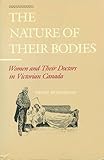The Nature of their Bodies : Women and their Doctors in Victorian Canada / Wendy Mitchinson.
Material type: TextSeries: HeritagePublisher: Toronto : University of Toronto Press, [1994]Copyright date: ©1991Description: 1 online resource (474 p.)Content type:
TextSeries: HeritagePublisher: Toronto : University of Toronto Press, [1994]Copyright date: ©1991Description: 1 online resource (474 p.)Content type: - 9780802059017
- 9781442681811
- 610/.82 20
- R462 .M58 1991
- online - DeGruyter
| Item type | Current library | Call number | URL | Status | Notes | Barcode | |
|---|---|---|---|---|---|---|---|
 eBook
eBook
|
Biblioteca "Angelicum" Pont. Univ. S.Tommaso d'Aquino Nuvola online | online - DeGruyter (Browse shelf(Opens below)) | Online access | Not for loan (Accesso limitato) | Accesso per gli utenti autorizzati / Access for authorized users | (dgr)9781442681811 |
restricted access online access with authorization star
http://purl.org/coar/access_right/c_16ec
In 1864 a woman was admitted to the Toronto asylum and diagnosed as suffering from 'mania,' a not uncommon diagnosis for women, a step beyond 'hysteria.' The cause cited by doctors for the patient's insanity was lactation.This was one of the scores of cases cited by Wendy Mitchinson in her history of the medical treatment of women in Victorian Canada. The cases, combined with the medical literature of the period, reflect the society's preoccupations, both among the general population and the medical profession. Above all, they illustrate in sharp detail the society's perception of women.For most medical practitioners, the male body was taken to be the norm; women were 'other.' Doctors were uncomfortable with some of the central physiological experiences of women, such as menstruation and menopause. They often felt that healthy bodies should not undergo such stresses.From this attitude it was a short leap to viewing the normal functions of women's bodies as illnesses to be treated by specialists. One of the most significant medical developments of this period was the rise of gynaecology and medical obstetrics as major medical specialties. Practitioners used surgical gynaecology to alleviate disorders - mental as well as physical - in women.In documenting the changing nature of interventional medicine, Mitchinson considers the medical treatment of women within the context of what was available to physicians at the time. She also explores the kind of pressure that women themselves brought to bear. Faced with a medical profession that viewed them as creatures of weakness, women used their strength and stamina to change attitudes and treatments.
Mode of access: Internet via World Wide Web.
In English.
Description based on online resource; title from PDF title page (publisher's Web site, viewed 01. Nov 2023)


